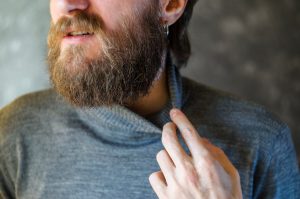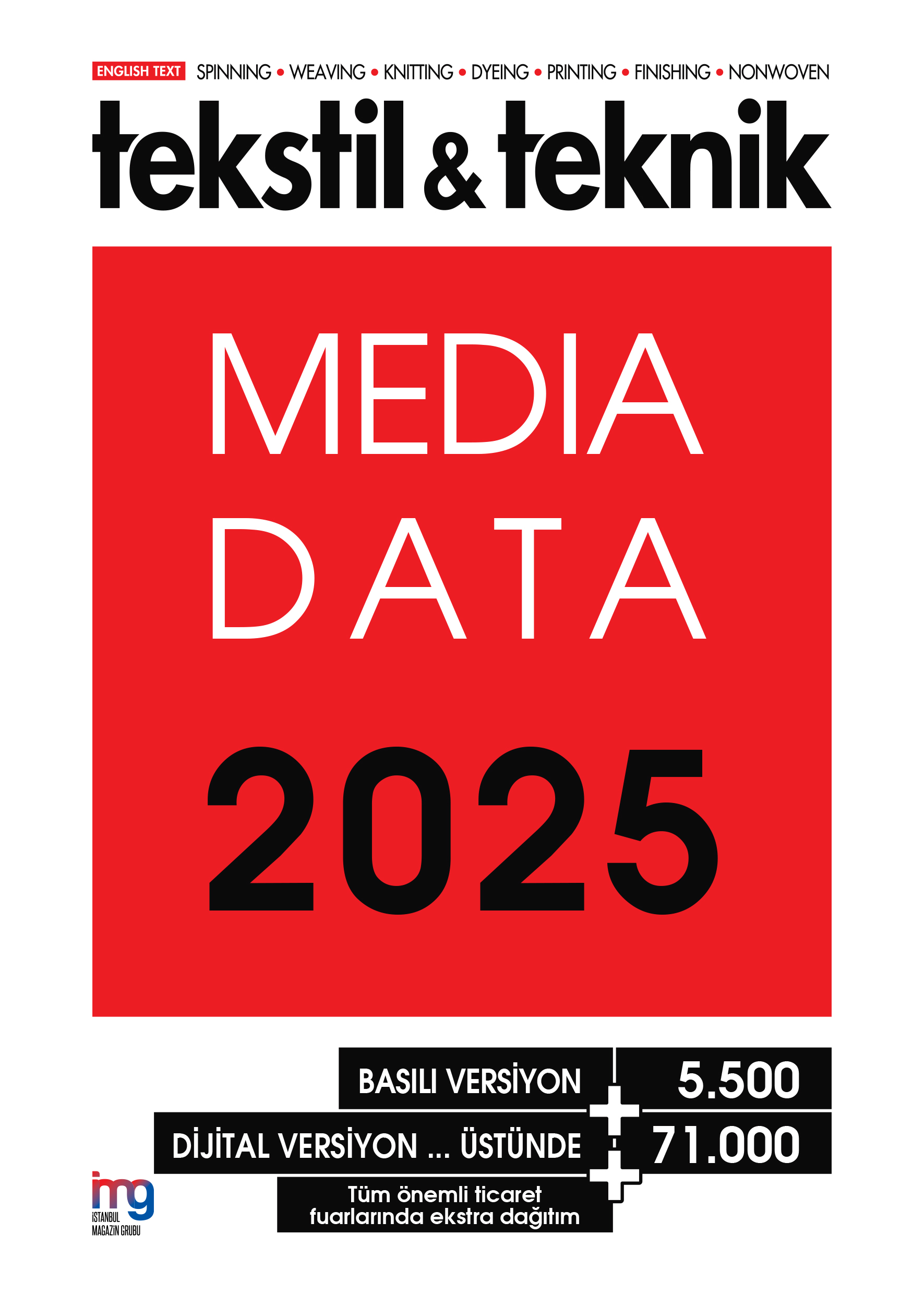
Gamze SÜPÜREN MENGÜÇ Ege Üniversitesi Emel Akın Meslek Yüksekokulu Bornova – İzmir / Türkiye
Nilgün ÖZDİL Ege Üniversitesi Tekstil Mühendisliği Bölümü Bornova – İzmir / Türkiye
ABSTRACT
The prickle sensation (fabric itching) created by the fabrics on the human skin is a fabric handle parameter which is generally examined within the “sensory feature of the fabrics”. Nowadays, due to the change in environmental conditions (increased stress, skin sensitivity etc.) and requirements from textile products, sensorial comfort has become an increasingly important subject. It is important to determine comfort properties of textile products and it affects the tendency of consumers to prefer these high quality products. Today, although there are various devices and methods to determine the performance of textile products with improved comfort characteristics, there is still a great need for new measurement systems, both in the consumers, manufacturers and in the scientific field. When the literature reviewed, it can be seen that fabric evoked prickle is mostly examined subjectively. However, since the results obtained in subjective evaluations vary according to the parameters such as age and gender of the jury members, there is an important need to measure this feature objectively. Brief information about the prickle properties of fabrics, the reasons of it and the new developed instrument to provide an objective measurement system for fabric evoked prickle is given in this article. Keywords: Fabric prickle, fabric itching, skin irritation, testing device
1.INTRODUCTION
The term of clothing comfort can be defined as the pleasant state including physiological, psychological and physical harmony between a human body and its environment (Utkun, 2014; Sweeney and Branson, 1990; Li, 2001; Liao, 2011, Mert et al.,2014) and can be classified into four broad categories: thermal, body movement, aesthetic and sensorial (tactile) comfort. (Marmaralı ve Oğlakcıoğlu, 2013). Barker (2002) pointed out that sensorial comfort is determined by many feelings such as softness, smoothness, wetness and fabric prickle (Barker, 2002; Kaplan, 2009; Dündar, 2008).
Sensorial comfort is related with the neural sensations when a fabric or garment comes into contact with human skin. In order to provide high sensorial comfort property, the garment that comes into contact with the skin should have a structure and flexibility that would create a pleasant touch feeling, it should not cause itching and allergies. (Marmaralı ve Oğlakcıoğlu, 2013). Meanwhile, clothing design and fabric structure have great importance (Yılmaz, S., 2008; Yıldırım, 2013).
One of the most important parameters affecting fabric structure is the fiber type. Although fiber properties are highly effective on prickle, it is stated that the fabric prickle is not related with the type of fibers used in the production of the garment. In other words, it does not matter whether the material used is natural fibers such as wool, mohair etc. or chemical fibers such as acrylic. Any natural or chemical fiber can generate prickliness feeling when appropriate conditions occur (Safley, 2010, Mengüç et al.2015).
As the previous studies reviewed, it was determined that there are various studies related to the prickle properties of clothes containing animal fibers or various synthetic fibers. It is observed that, most of the studies are especially on the investigation of the properties of fabrics containing animal fibers.
According to the results obtained from the researches on fiber properties, it was determined that the bending behavior of the fibers affects the fabric prickle. It is stated that with the reduction of the bending load of the protruding fiber ends, the prickle property of the fabrics decreases. In addition to this, the fiber diameter and the length of the fiber ends coming out of the surface are declared as the most important factors affecting the bending force. (He and Wang, 2002; Garnsworthy et al., 1988; Mayfield, 1987, Süpüren Mengüç, 2012, Özdil and Süpüren, 2012).
He and Wang (2002) studied the flexural buckling behavior of irregular or non-uniform fibers and found that increasing level of irregularity decrease the critical buckling load of fibers. As the level of variation increases, the critical buckling load decreases. The effective length and the average diameter within the effective length of a non-uniform fiber are the significant factors that influence the critical buckling load of the fiber.
According to Naylor (2003), for a given fabric type, the absolute number of coarse fiber ends per unit area of fabric is an indicator of the skin comfort provided by the fabric. Therefore, all fiber ends that have larger diameter than the critical diameter play an equal role in determining fabric skin comfort. Fiber length has only a small effect on skin comfort, as it affects the number of fiber ends per unit area of the fabric.
Boos et al. (2001) searched the handle and prickle properties of knitted fabrics produced from wool fibers obtained from the sheep grown in the Mediterranean climate in different seasons. A good correlation was observed between skin comfort and the mean diameter of the fiber ends and it was stated that the average fiber diameter value played a more dominant role in determining the handle characteristics of the fabrics.
2.GENERATION OF PRICKLE CAUSED BY FABRIC
Fabric prickle occurs when the skin is in touch with fabric. Researches reveals that the prickle perceived by humans is caused by mechanical impulses affecting the skin surface. These stimulis are caused by fiber ends that come out of the fabric surface and can carry at least 100 mgf force without bending and thus affect the pain receptors on the skin surface (Ao et al., 2007; CSIRO, 1988; Naylor et al., 1992). If the density of the high-load fiber ends on the fabric surface reaches a certain degree, prickle problem arises. However, to feel fabric prickle there should be a contact area of more than 5 cm2 between the skin and the fabric. Thus, nerve endings can be stimulated and fabric evoked prickle starts. At this point, the distribution of fiber ends on the fabric surface, bending behaviors, lengths and fineness of fiber ends, the interaction of the skin and the fabric are of great importance. In Figure 1, the fiber ends indicated with “d” and “e” dent the skin, namely, they cause prickle. However, the fiber indicated by “a” can not dent the skin enough because the length of the fiber end is equal to or less than the contact interspace. When the length of the fiber end is slightly longer than the contact interspace (condition of the fiber b), no prickle occurs because the fiber does not generate enough stimulation in the skin. In some fibers, even if the fiber length is sufficient and remarkably longer than the contact interspace, prickle cannot occur. In this case (the condition of the fiber c), due to the high bending deformations of the fibers (due to the softness of the fibers), it does not create sufficient denting on the skin surface, and no prickle effect occurs (Ao et al., 2007). (Figure 1)
Fabric prickle occurs when the fiber ends on the fabric surface dent the skin to the extent that they activate the pain receptors. Different sensory receptors in the skin are responsible for the various sensations that are perceived as a result of the interaction of the skin and fabric. These receptors are classed as touch, thermal, and pain. The sensations perceived from clothes worn next to the skin depend on how fabrics interact with these sensory receptors. The surface characteristics of fabrics have significant effect on these responses. Some fabrics contain surface stimuli causing the skin irritation or prickle.
Prickle results due to the high-load supporting fiber ends on the fabric surface denting the skin sufficient enough to activate pain receptors. The receptors that are responsible for fabric prickle are very close to the surface of the skin. The response of these receptors is a low level prickle sensation rather than pain sensation. Skin reactions caused by prickly fabrics can appear within one hour or after several hours of skin contact.
In determining the sensitivity changes to some special sensory stimuli (light, sound, vibration, etc.), the lowest threshold value of the stimulus is measured for each person to perceive that feeling. For this purpose, studies conducted on a group of 28 male and 27 female people with ages ranging from 20 to 60 years revealed that men are less sensitive than women and sensitivity decreases with increasing age (Safley, 2010).
The prickle properties of woolen fabrics are affected by the fineness of the fibers in the fabric structure. As the fibers thicken, the probability of fabric evoked prickle increases. Fiber length also affects the prickle in terms of affecting the number of fiber ends in the unit area of the fabric. (Woolmark Company, 2020).
If 5% of the fabric consists of fibers with a fiber diameter exceeding 30 microns, the fabric prickles and itchy sensation begins to occur (Bishop, 1996; Özçelik Kayseri et al., 2012). Safley (2010) states that the prickle factor appears in fabrics containing fibers having mean diameter value over 22 microns (Safley, 2010).
3. NEW MEASUREMENT SYSTEM DEVELOPED FOR THE MEASUREMENT OF FABRIC PRICKLE
In the literature, although there are studies and patents on objective measurement of itching sensation caused by fabrics, there is not a device commercially widespread. Studies have been carried out on objective measurement system that contributes a new approach to garment comfort to overcome this important deficiency by Mengüç and Özdil.
After analyzing the reasons of fabric prickle and investigating the studies on the objective measurement of this subjective fabric property, a new device was developed that works according to a different and original principle. In the new developed system, stiff, short and thick fibers that cause prickle on fabric surface can be detected with the help of special measurement sensors (heads). When the special designed nails placed on these measurement heads come into contact with stiff fiber ends, a high friction force occurs. Soft fiber ends cannot produce this effect.
The developed device uses a circular motion measurement. During the measurement, the measurement head does not apply any pressure on the fabric, only by lowering the measurement head, the nails penetrate in the hairs of the fabric. In this situation, during the movement of the head, prickle force caused by the fiber ends can be detected. Therefore, regardless of the thickness of the fabric to be measured, measurements can be conducted.
The instrument operates with a special sample holder, so that it is possible to test all fabric types in different thicknesses and weights from very thin fabrics such as shirt fabrics to very thick products like coat fabrics and diapers. It is also possible to test both woven, knitted and nonwoven fabrics by the instrument. (Figure 2)
The nails on the measurement head are very thin, contact only with the hairs on the surface of the fabric. These nails generate vibration, due to the bending rigidity of the fibers during the movement. Therefore, a very sensitive measurement can be made. The position of the nails during their penetration in the hairs can be controlled by a special system. In addition, the position of the nails can be displayed and recorded during the test.
Besides the measurement accuracy, another advantage of this instrument is to work with very small test samples providing cost element. The samples that have potential for fabric evoked prickle are mostly wool and special animal fibers which are expensive materials. Therefore, manufacturers or consumers working with these materials do not prefer to work with large samples and spend too much sample during the test. Considering this expectation in the market, in the developed device, test is conducted with fabric samples having an area of 50 cm2.
A special protection system is used to protect the load measurement area against physical impacts on the device. In addition, a special sample holder placement system is used to increase the protection of this area against physical impacts that may arise during sample placement.
Since the measuring head used in the device is fixed to the upper area of the device before the test, its weight is negligible. Therefore, more precise measurement of the force fluctuation caused by the prickly fiber ends becomes possible.
A databank was created by examining the signals obtained from the measurements using fabrics made from different types of fibers. For this purpose, 70 different types of fabrics were used in this experiment. The fabrics were evaluated by 40 jury members subjectively for their prickle properties. The determined subjective prickle degrees were compared with the results obtained from the developed device. When the results obtained from the different heads developed for woven and knitted fabrics are evaluated in general, it is concluded that the correlation between objective and subjective results is so high that new developed instrument can be suggested as a very sensitive objective evaluation method for the industrial applications.
ACKNOWLEDGEMENT
This project was supported by the Scientific and Technological Research Council of Turkey (TÜBİTAK), Grant No: 116M300-1001 Project. We would like to thank TÜBİTAK for the support, which enabled the development of this device. The patent application for the device developed by this project was filed at the beginning of 2019. Intellectual property rights related to the invention were transferred to the “PRO-SER Ltd. Company in December 2019 within the scope of the protocol.
KAYNAKLAR | LITERATURE
1. Ao, L., Tang, W., Yang, Y. and Yu, C., 2007, The analyzing and simulating of the ınteraction between skin and fabric, Proceedings of the Sixth International Conference on Machine Learning and Cybernetics, Hong Kong, 19-22 August.
2. Barker, R. L., 2002, From Fabric Hand to Thermal Comfort: The Evolving Role of Objective Measurements in Explaining Human Comfort Response to Textiles. International Journal of Clothing Science and Technology, 14, 3/4, 181-200.
3. Bishop, D.P.,1996, Fabric: Sensory and Mechanical Properties, The Textile Institute, Textile Progress, UK, Volume: 6, No:3,
4. Boos, A.G. De, Naylor, G.R., Slota, I.J. and Stanton, J., 2001, The Effect of the Diameter Characteristics of the Fibre Ends on the Skin Comfort and Handle of Knitted Wool Fabrics, International Wool Textile Organisation, Technology & Standards Committee Commercial Technology Forum, Nice Meeting, November 2001, Report No: CTF 01.
5. CSIRO Division of Wool Technology, 1988, Prickle and its Prevention, Textile Asia, 19(5):95-99.
6. Dündar, E., Çeşitli Selülozik İpliklerden Üretilen Örme Kumaşların Performanslarının Karşılaştırılması, İstanbul Teknik Üniversitesi, Fen Bilimleri Enstitüsü, Mart 2008 , https://polen.itu.edu.tr/bitstream/11527/4583/1/8410.pdf
7. Garnsworthy, R. K., Gully, R. L.. Kandiah, R. P., Kennis, P., Mayfield, R. J., and Westerman, R. A., 1988, Understanding the Causes of Prickle and Itch from the Skin Contact of Fabrics, Austr. Textiles, 8(4):26-29.
8. Mayfield, R.J., 1987, Preventing Prickle, Textile Horiz., 7(11):35-36.
9. He, W. and Wang, X., 2002, Mechanical Behavior of Irregular Fibers: Part III: flexural Buckling Behavior, Textile Research Jour- nal,72:573-578.
10. Kaplan, S., 2009, Kumaşların Mekanik Özelliklerinden Ve Geçirgenlik Özelliklerinden Yararlanılarak Giysi Konforunun Tahminlen- mesi, Dokuz Eylül Üniversitesi Fen Bilimleri Enstitüsü, Şubat.
11. Li Y., 2001, The Science of Clothing Comfort. Textile Institute Publications, Textile Progress, 31(1/2), Manchester, UK.
12. Liao X, Hu J, Li Y, Li Q, Wu X. 2011, A Review on Fabric Smoothness-Roughness Sensation Studies”. Journal of Fiber Bioenginee- ring & Informatics, 4 (2), 105-114.
13. Marmaralı, A., Oğlakcıoğlu, N., 2013, Giysilerde Isıl Konfor, 11. Ulusal Tesisat Mühendisliği Kongresi, 17-20 Nisan/İzmir, 1957-1963. 14. Mert, E., Oğlakçıoğlu, N., Bal, Ş., Marmaralı, A., 2014, Effects of Calendering and Milling Processes On Clothing Comfort Proper- ties of Suit Fabrics, Tekstil ve Konfeksiyon 24(2), pp.212-218
15. Mengüç, G.S., Özdil, N., Hes, L., 2015, Prickle and Handle Properties of Fabrics Produced from Specialty Animal Fibers, Textile Research Journal, Vol. 85(20) 2155–2167
16. Naylor, G.R.S., Veitch, C.J. and Mayfield, R.J., 1992, Fabric-evoked prickle, Textile Research Journal, 62(8):487-493.
17. Naylor, G., 2003, A Measured Approach Aids Wool Comfort, Farming Ahead, No. 143 December, pp. 50-51.
18. Özçelik Kayseri, G., Özdil, N., Süpüren Mengüç, G., 2012, Chapter: 9, Sensorial Comfort Of Textile Materials, Woven Fabrics, Prof. Han-Yong Jeon (Ed.), ISBN: 978-953-51-0607-4,pp:235-266.
19. Özdil, N., Süpüren, G., 2012, Bazı Özel Hayvansal Liflerden Elde Edilen İpliklerden Üretilen Kumaşların Özellikleri Üzerine Bir Araştır- ma, Ege Üniversitesi Bilimsel Araştırma Projesi, Proje No: 09-MÜH-064
20. Safley, M. “The Wool Industry Faces a Prickly Question: Are People Allergic to Wool?” http://www.merrill.org/alabamaalpacas/ library/WoolIndustry.pdf (Erişim Tarihi: 06 Şubat 2010), https://www.woolfestival.com/articles/are-people-allergic-to-wool.htm (Erişim Tarihi: 09 Şubat 2020)
21. Süpüren Mengüç, 2012, Bazı Özel Hayvansal Liflerden Elde Edilen İpliklerden Üretilen Kumaşların Özellikleri Üzerine Bir Araştırma, Ege Üniversitesi Fen Bilimleri Enstitüsü (Doktora Tezi), Bornova-İzmir
22. Sweeney, MM, Branson, DH. “Sensorial Comfort, Part I: A Psychophysical Method for Assessing Moisture Sensation in Clothing”. Textile Research Journal, 60(7), 371-377, 1990.
23. Utkun, E., 2014, Giyim Konforunun Tahminlenmesinde Yapay Sinir Ağları Sistemlerinin Kullanımına Yönelik Bir Literatür Araştırması, Pamukkale Üniversitesi Mühendislik Bilimleri Dergisi, 20(7), 272-280, doi: 10.5505/pajes.2014.29491
24. Yıldırım, N., 2013, Yıkama İşleminin Farklı Tipte Denim Kumaşların Fiziksel ve Termofizyolojik Konfor Özellikleri Üzerine Etkilerinin İncelenmesi, Erciyes Üniversitesi Fen Bilimleri Enstitüsü Tekstil Mühendisliği Anabilim Dalı, Kayseri
25. Yılmaz, S., 2008, Üç Boyutlu Örme Kumaşlar. Erciyes Üniversitesi, Fen Bilimleri Enstitüsü, Yüksek Lisans Tezi, Kayseri.
26. Woolmark Company, www.wool.com (Erişim Tarihi: 09.02.2020)










